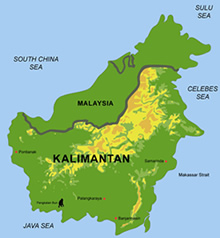lidar technologies

Lidar technologies
We measure distances by illuminating a target with a laser and analyze the reflected light.
- Biomass Situation of Mawas Region in Central ...
- Spatial and temporal variation of above ground ...
- Multi-Temporal Airborne LiDAR-Survey and Field ...
- Relating ground field measurements in Indonesian ...
- Assessing Carbon Changes in Peat Swamp Forest ...
- Multi-Temporal Airborne LiDAR-Survey in 2007 and ...
- Characterizing Peat Swamp Forest Environments ...
- Multi-temporal Helicopter LIDAR- and RGB-Survey ...
- Application of LiDAR data for analyzing fires, ...
- LiDAR Technology for peatland using DSM- and ...
- Small-footprint airborne LiDAR technology for ...
- 2006 Fire depth and tree height analysis in Block ...
- Relating tree height variations to peat dome ...
- LiDAR- / Airborne Laser Scanning mapping of ...
- Rungan Sari PCB, Draft Masterplan with LiDAR-DTM ...
- LiDAR Survey of Small Scale Gold Mining near ...
- Airborne Laser Scanning measurements in Central ...
- Peatland Topography of Ex-MRP measured with ...
- Rungan Sari Airborne Laser Scanning 3D-Model and ...
- Peat Dome Measurements in Tropical Peatlands of ...
- Erfolgreiches Pilotprojekt im tropischen ...
- Airborne Laser Scanning monitoring of Ex-MRP area ...
- Successful Helicopter Flight Trials with Airborne ...
- Successful Helicopter Flight Trials with Airborne ...
gallery

image gallery
Find a large collection of images from many years of exploration by kalteng-consultants.
History Borneo - Kalimantan · Excursions to peatland 1996 · Mega Rice Project 1999 · 2004 · 2005 · 2006 · 2007 · 2008 · 2009 · 2010 · 2011 · 2012 · 2013 · 2014 · 2015 · 2016-March · 2016-August ·
lidar-technology
Relating tree height variations to peat dome slope in Central Kalimantan, Indonesia using small-footprint airborne LiDAR data; SilviLaser, 9-2010

Figure: LiDAR-DTM profiles for Mawas area in (a) km228.8 and (b) km238 and (c) Sabangau area in Cenrl Kalimantan. We selected for the cross-section a profile parallel to the visible logging transects. Transects were acquired with different lengths and have different scales in elevation and in x-direction.
Silvilaser conference 2010, 14th - 17th September, Freiburg, Germany
by Hans-Dieter Viktor Boehm *†, Veraldo Liesenberg ‡ and Juergen Frank †
† Kalteng Consultants [www.kalteng.org], Kirchstockacher Weg 2, D-085635, Hoehenkirchen, Germany. * Corresponding author. Email: viktorboehm@t-online.de - ‡ Faculty of Geosciences, Geotechnique and Mining, TU Bergakademie Freiberg, Bernhard-von-Cotta-Str. 2, D-09599, Freiberg, Germany
Abstract
We investigated how measures derived from small footprint airborne Light Detection and Ranging (LiDAR) data can be used to evaluate the relationships between tree height (represented by the digital surface model, DSM) and peat swamp dome slope (digital terrain model, DTM). In August 2007 we mapped by helicopter different peat swamp forest (PSF) environments with Riegl LiDAR Technology LMS-Q560 in the Mawas area of the Ex-Mega Rice Project (EMRP) and in the Sabangau National Park (Central Kalimantan, Indonesia). In each LiDAR transect we used sample plots of 100x100m along the flown acquisition with a distance of 200m from each other. In each sample plot we calculated the peat dome slope and the tree height and we evaluate linear regression between both parameters. Our results showed that: a) the tree height increases by approximately 5m if the peat dome slope increases from 0.5 to 1.5m pro mille (m/km) from Sabangau River to the peat dome; and b) there is a relationship between both variables (r2≥0.60) that may be related with the permeability, interflow, water storage capability and nutrient availability in the domes. In a near future we intend to conduct regression analysis considering the field-measured stem volumes against together with LiDAR-derived tree height and Ortho-photos in the frame of the REDD knowledge.

